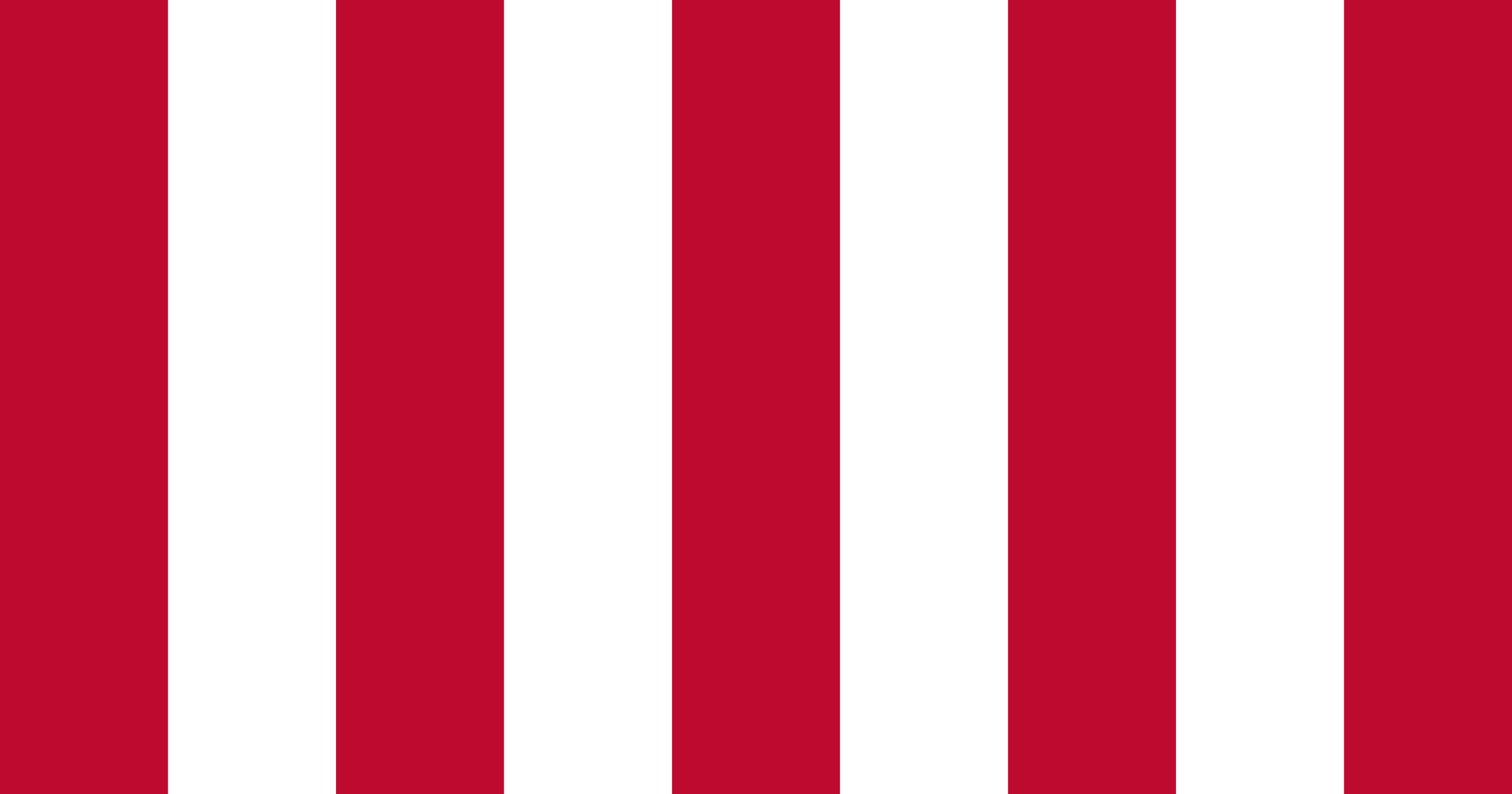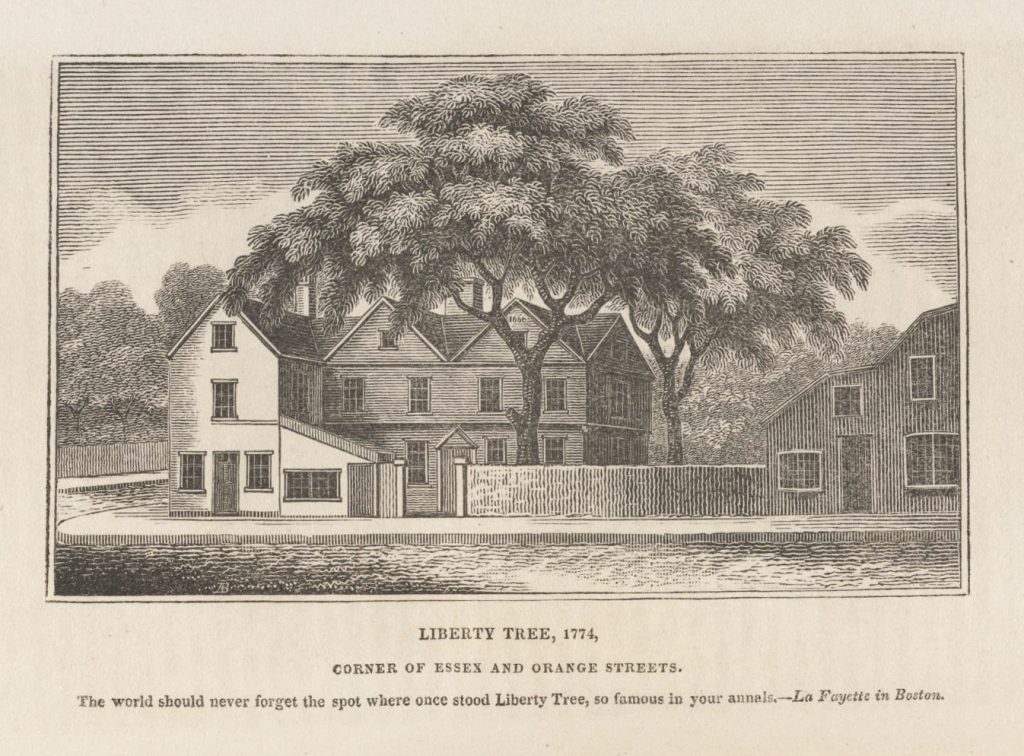Contents

Contents
The Sons of Liberty Flag, also known as The Rebellious Stripes, was used as a symbol of the Sons of Liberty, and of resistance against British taxation during the American Revolution.
This was the first American flag to use the iconic red and white stripes seen on the stars and stripes today.
Design and origin
The Sons of Liberty Flag features nine stripes – five red, and four white, arranged vertically, with no other symbols or marks. Each stripe represents an American colony.
In March 1765, the British government passed the Stamp Act – a tax imposed on different kinds of printed materials – which the colonists considered extremely unfair. The tax was created to fund British troops on the continent, and the colonists did not have any elected members in the British parliament, This is why the Stamp Act was labeled “taxation without representation”.
The Stamp Act led to widespread protests and unrest, especially towards British tax collectors. In Boston, a group of patriot businessmen called the Loyal Nine was formed to organize resistance against the Stamp Act. Later, this group evolved into the Sons of Liberty, which was formed in August 1765.
The Sons of Liberty was an underground group of patriots that organized protests and demonstrations against British taxation, which would sometimes turn violent. They were primarily a political organization, helping to sway public opinion against the British. During the war, they produced propaganda and helped with the logistical efforts of the Continental Army.
The group was loosely structured, and was often used as a moniker for any patriot organization that opposed British taxation and overreach. Samuel Adams, Paul Revere, and John Hancock were among its members.
The nine stripes on the Sons of Liberty Flag represent the nine colonies that attended the Stamp Act Congress – Massachusetts, Rhode Island, Connecticut, New York, New Jersey, Pennsylvania, Delaware, Maryland, and South Carolina.
A Boston Lawyer, James Otis, invited each of the Thirteen Colonies to attend the Stamp Act Congress in New York in October 1765, to discuss how to petition the British government to repeal their unjust law.
At the Congress, the representatives passed a “Declaration of Rights and Grievances,” which laid the groundwork for many of the principles that the colonists would fight for during the American Revolution. They also appealed directly to the British House of Commons, and wrote a letter to the king.
In about 1775, the flag was updated to include 13 stripes to represent each of the Thirteen Colonies. This is when the stripes on the flag were changed from vertical to horizontal.
Usage
This flag was used to signal meetings of the Sons of Liberty, especially at common gathering points such as the Liberty Tree in Boston, where a flag pole was erected in the summer of 1767. The first use of this flag likely dates to around August of that year.
When a meeting or a protest was to occur, a flag would be raised, where it could be seen by those around Boston Common.

In 1775, the Liberty Tree was cut down by Loyalists. The Sons of Liberty replaced it with the Liberty Pole – a flagpole that The Rebellious Stripes would later fly from.
Some accounts state that it was often the British Red Ensign that would be flown above the Liberty Tree and Liberty Pole, not the Sons of Liberty Flag, especially before the Siege of Boston. Since the city was occupied by the British, raising the red and white stripes was a potentially risky move to make, as the flag was outlawed.
Raising an unaltered British Red Ensign would have also been illegal for the colonists, however, because it was reserved for use on British merchant ships, so it’s unclear how strictly flag-flying laws were enforced at the time.
Historical significance
The Sons of Liberty Flag remains an iconic symbol of colonial unity in the leadup to the American Revolution, especially against the Stamp Act. The law was repealed partly thanks to the efforts of underground movements like the Sons of Liberty.
But perhaps the most historically significant thing about this flag is how it inspired the first Stars and Stripes flag of 1777. Every single American flag since the original, including the one we use today, features the red and white stripes first seen on the Sons of Liberty Flag back in 1767.
An old Sons of Liberty Flag can be found in Massachusetts State House. It was donated by a man named John C. Fernald in 1893, and was supposedly flown above the Liberty Tree. However, historians have questioned this, as the type of machine-woven fabric of the flag was not commonly available in 1775. Despite this, it is still considered the original Sons of Liberty Flag, and it is the oldest copy that exists today.

